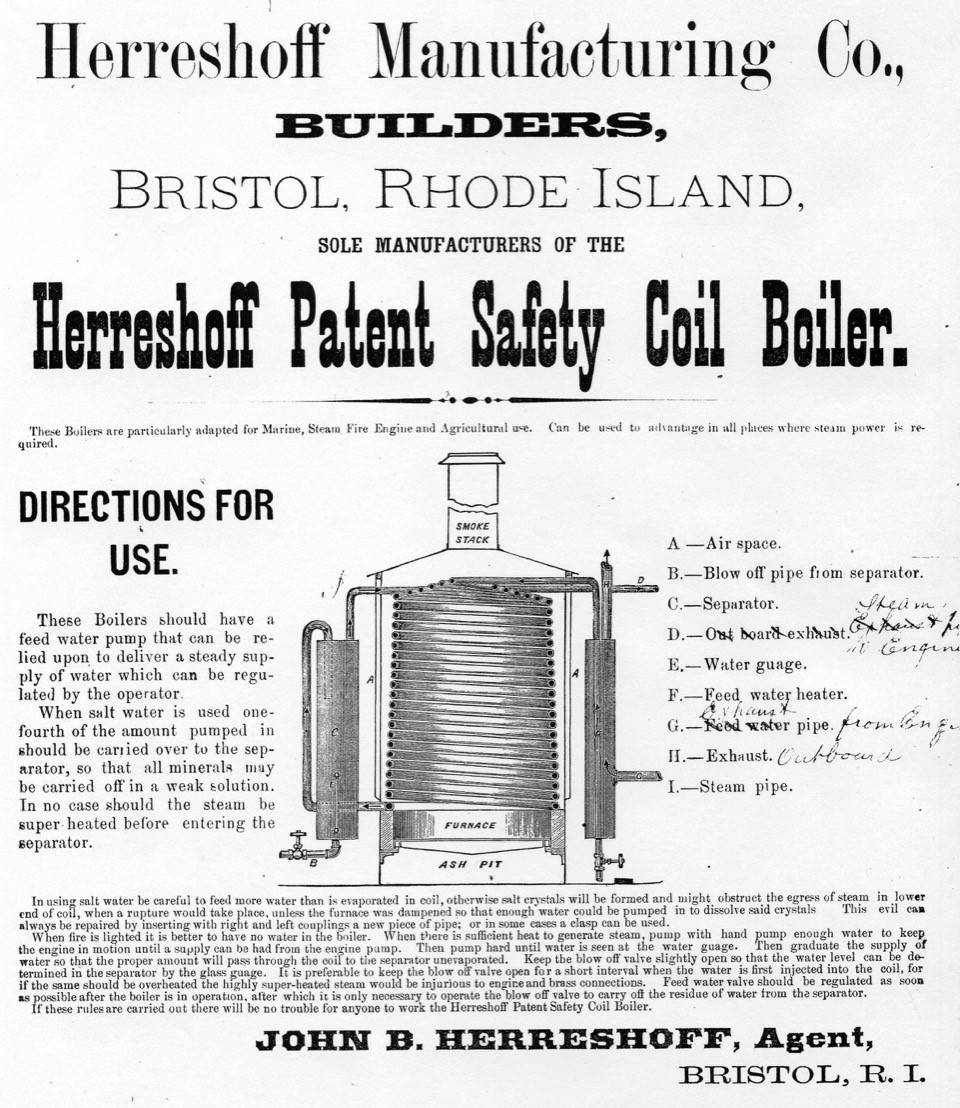March 4, 2021
This Week in Herreshoff History: March 4
Another 46-foot-class rule beater, a handful of fin keels, a publishing baron's fleet and fears of a boiler explosion
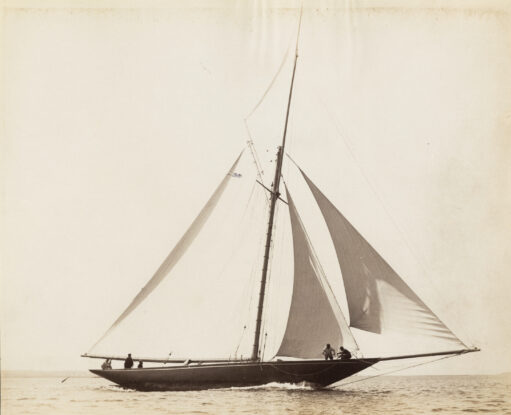
March 5, 1892
The Bristol Phoenix reports on the previous week's launching of WASP (HMCo. #414) and the 2 1/2 rater WENONAH (HMCo. #415), 129 years ago. WASP was the largest sailing vessel HMCo. built that year, and she was the next generation in rule-beating 46 foot class boats after GLORIANA (HMCo. #411) of 1891. In his 1952 book "Yachting Memories," Clinton Crane said of WASP, "Cleve Dodge bought the Wasp in 1899 and I altered her for him that winter by adding a stateroom. Wasp had been built to beat Gloriana. She was so lightly built that doors that would open at anchor could not be opened under way. In fact, if one were in a stateroom with the door shut, he had to wait until the boat came into the wind before he could get out. In spite of this light construction, the Wasp lasted for years and, in my experience of her, never leaked. I usually sailed her in the squadron runs. Up to that time, almost all the boats that I was familiar with had carried a stronger weather helm as the wind increased, so I was very much surprised to find that the Wasp, when she heeled beyond a certain point, carried a strong lee helm. This was overdoing something which really was a virtue. A boat's form that enables her to carry her helm amidships, irrespective of the strength of the wind, is a most desirable feature in racing."
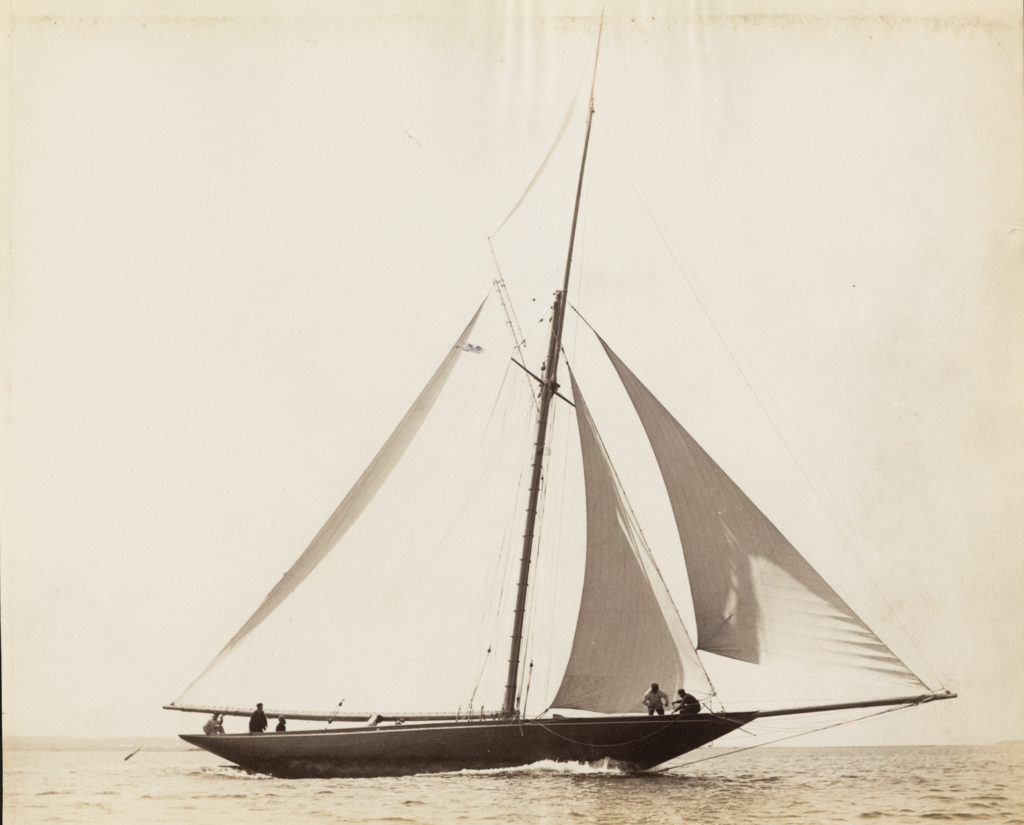

The previously mentioned fin keeler WENONAH (HMCo. #415) was built for Henry Allen of Scotland and in the words of L. Francis, "cleaned up on the Clyde." (The New York Times referred to her as the "whilom terror of the Clyde"). WENONAH had a tobin bronze fin with a lead bulb below, and was one of a number of Captain Nat's radical fin keelers from the 1890s. Three additional fin keelers were built to the WENONAH half model in 1892: DRUSILLA (HMCo. #417), EL CHICO (HMCo. #418) and HANDSEL (HMCo. #422). WENONAH was later sold to Prince Henry of Prussia and raced under the name GUDRUDAH.
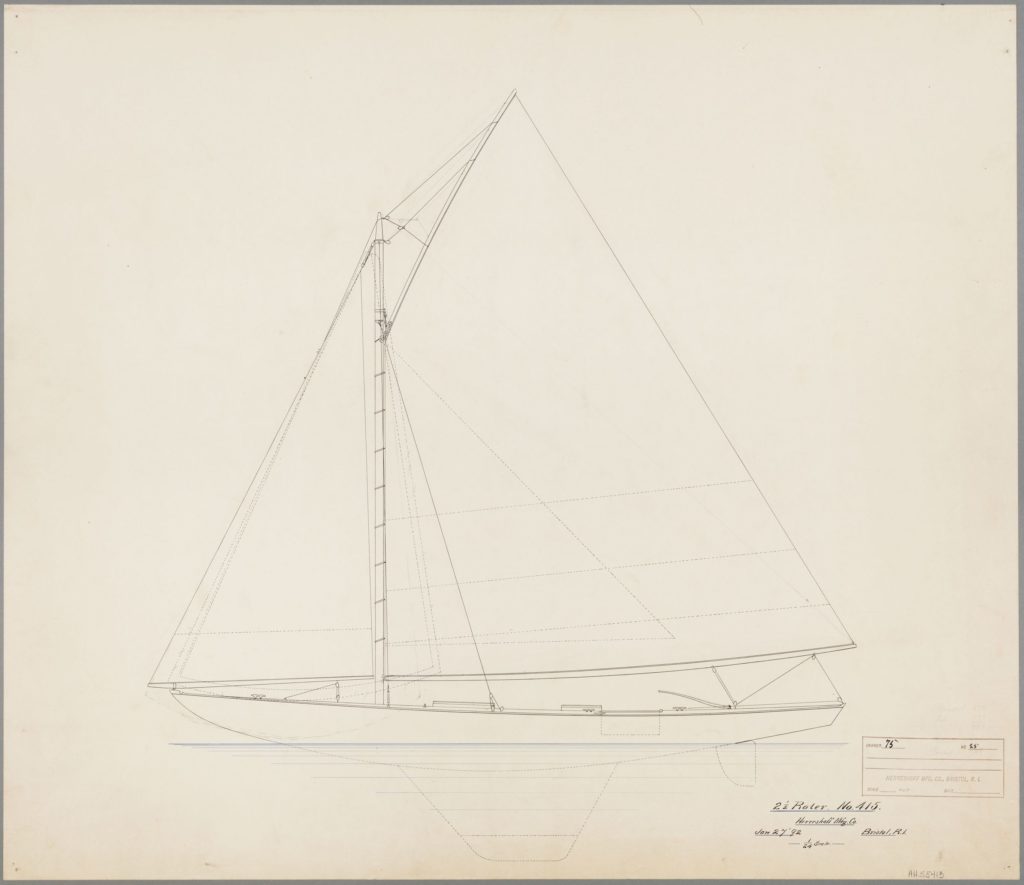
March 3, 1894
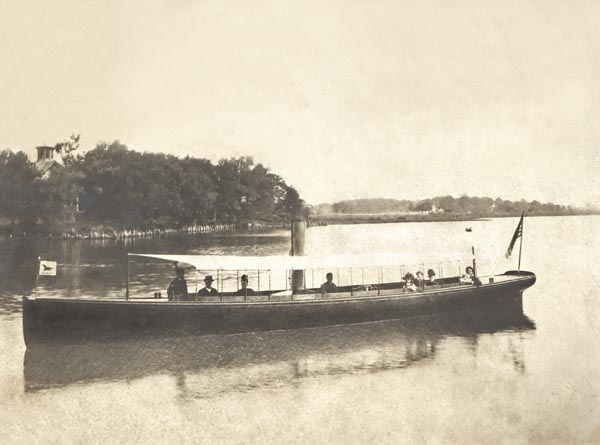
The Phoenix reports that Norman L. Munro, New York-based publisher of Munro's Library and former HMCo. client, has died. Munro commissioned five HMCo.-built steamers between 1886 and 1888: HENRIETTA (HMCo. #133), NOW THEN (HMCo. #142), OUR MARY (HMCo. #148), JERSEY LILY (HMCo. #149) and SAY WHEN (HMCo. #150). HENRIETTA was a high speed steam launch, NOW THEN and SAY WHEN were yachts, and OUR MARY and JERSEY LILY were both passenger steam ferries. Click here to read an article from The Chronicle archive by Halsey C. Herreshoff on the story of NOW THEN and SAY WHEN.
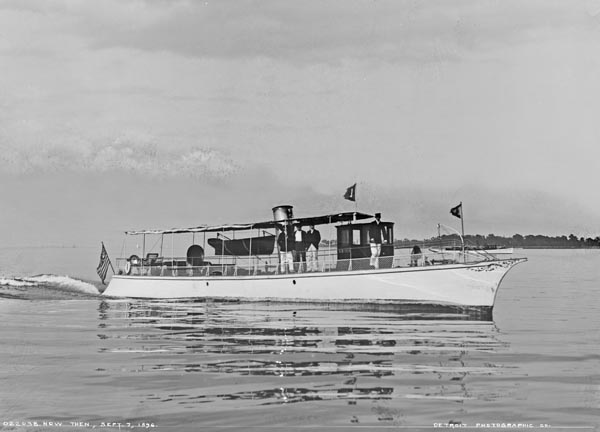
NOW THEN, 1896; courtesy Library of Congress 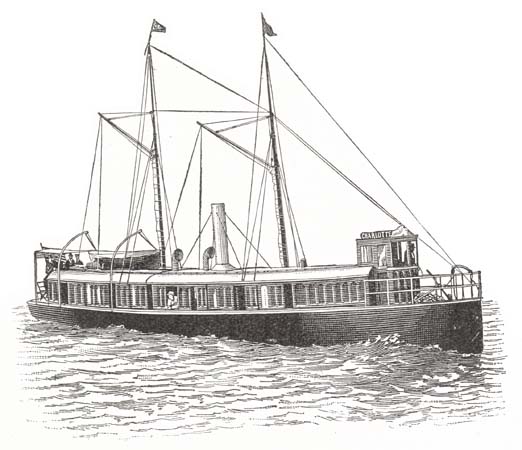
JERSEY LILY; courtesy the HCR 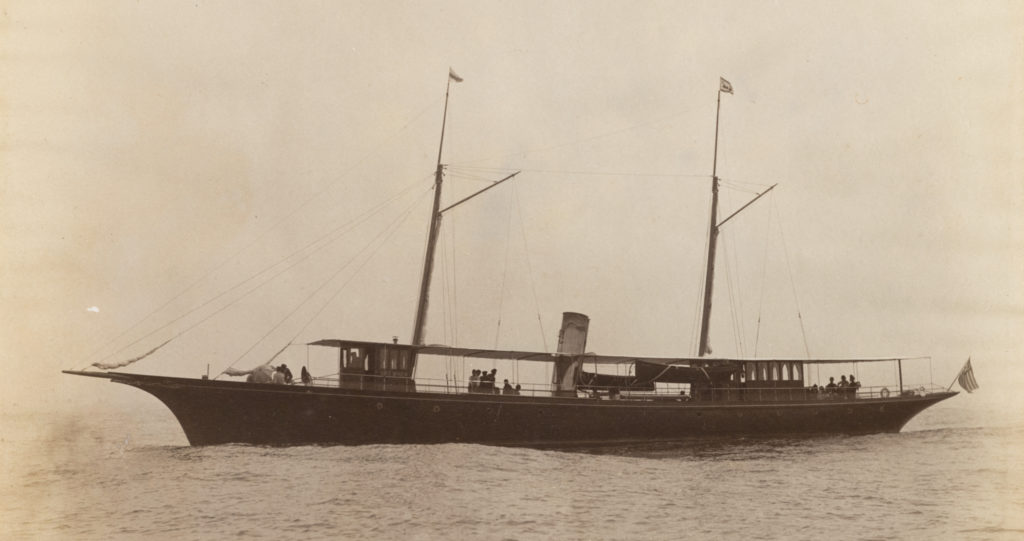
SAY WHEN in 1888; courtesy Historic New England Stebbins Archive
March 2, 1900
An exploding radiator on Union Street was so loud that many believed a boiler had exploded at HMCo., reports the Bristol Phoenix. Boiler explosions were no joke: catastrophic failures could launch steam locomotives into the air, sink large vessels, level buildings, sending shrapnel and debris flying and easily killing operators, passengers or bystanders. This is partly the reason steam engineers had to be licensed to operate these complicated power sources, and also why the "safety" aspect of the patented Herreshoff coil boilers in their boats was touted so widely as a part of their sales tactic. Even so, accidents still happened both on the water and on shore, for example in the case of the deadly SAY WHEN (HMCo. #150) firebox explosion. It is no surprise any factory neighbors would be jumpy about sudden noises, no matter how well engineered the product or careful a company's own engineers were.
In this particular case of the exploding radiator (thankfully, not a whole factory boiler) no one was hurt, though painter George E. Ingraham was thrown off his feet and two windows were shattered. Interestingly, neighbors reported to the Phoenix that it was as loud as the deadly flash powder explosion that occurred during the launch of COLUMBIA (HMCo. #499) some nine months earlier. Memories of that unfortunate event were clearly still close in people's minds.
